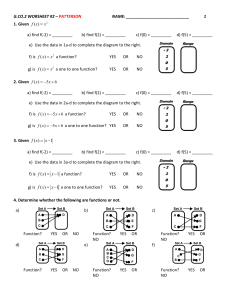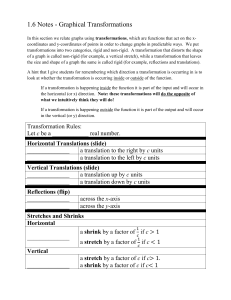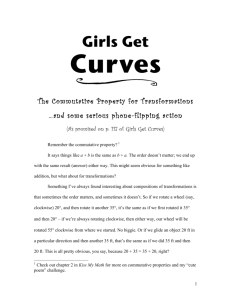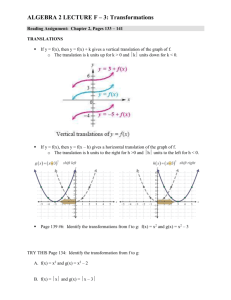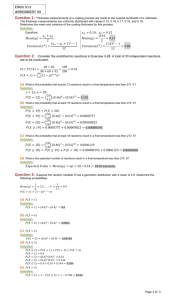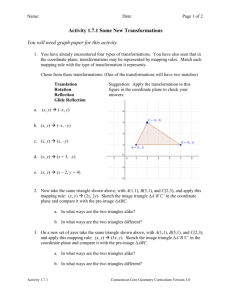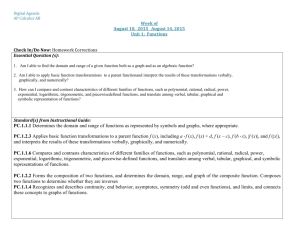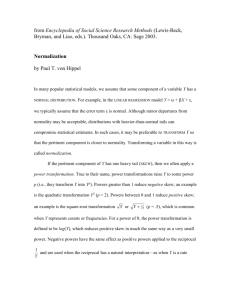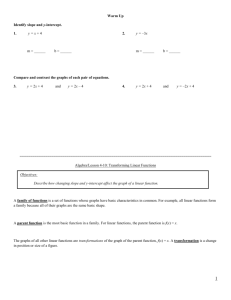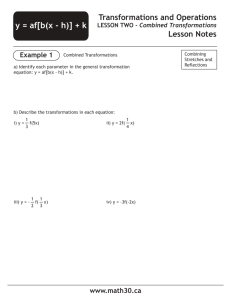2D - Stage 3 - Plan 9b - Glenmore Park Learning Alliance
advertisement
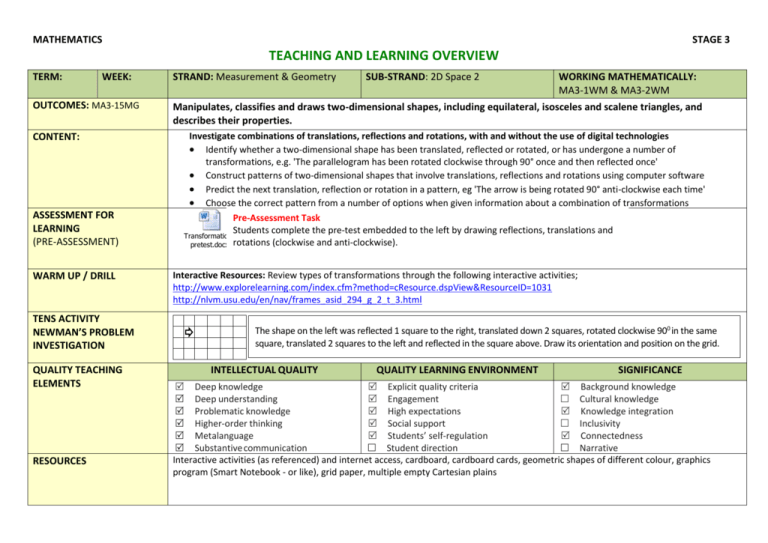
MATHEMATICS STAGE 3 TEACHING AND LEARNING OVERVIEW TERM: WEEK: OUTCOMES: MA3-15MG CONTENT: ASSESSMENT FOR LEARNING (PRE-ASSESSMENT) WARM UP / DRILL TENS ACTIVITY NEWMAN’S PROBLEM INVESTIGATION QUALITY TEACHING ELEMENTS RESOURCES STRAND: Measurement & Geometry SUB-STRAND: 2D Space 2 WORKING MATHEMATICALLY: MA3-1WM & MA3-2WM Manipulates, classifies and draws two-dimensional shapes, including equilateral, isosceles and scalene triangles, and describes their properties. Investigate combinations of translations, reflections and rotations, with and without the use of digital technologies Identify whether a two-dimensional shape has been translated, reflected or rotated, or has undergone a number of transformations, e.g. 'The parallelogram has been rotated clockwise through 90° once and then reflected once' Construct patterns of two-dimensional shapes that involve translations, reflections and rotations using computer software Predict the next translation, reflection or rotation in a pattern, eg 'The arrow is being rotated 90° anti-clockwise each time' Choose the correct pattern from a number of options when given information about a combination of transformations Pre-Assessment Task Students complete the pre-test embedded to the left by drawing reflections, translations and Transformations pretest.docx rotations (clockwise and anti-clockwise). Interactive Resources: Review types of transformations through the following interactive activities; http://www.explorelearning.com/index.cfm?method=cResource.dspView&ResourceID=1031 http://nlvm.usu.edu/en/nav/frames_asid_294_g_2_t_3.html The shape on the left was reflected 1 square to the right, translated down 2 squares, rotated clockwise 900 in the same square, translated 2 squares to the left and reflected in the square above. Draw its orientation and position on the grid. INTELLECTUAL QUALITY QUALITY LEARNING ENVIRONMENT SIGNIFICANCE Deep knowledge Explicit quality criteria Background knowledge Deep understanding Engagement Cultural knowledge Problematic knowledge High expectations Knowledge integration Higher-order thinking Social support Inclusivity Metalanguage Students’ self-regulation Connectedness Substantive communication Student direction Narrative Interactive activities (as referenced) and internet access, cardboard, cardboard cards, geometric shapes of different colour, graphics program (Smart Notebook - or like), grid paper, multiple empty Cartesian plains TEACHING AND LEARNING EXPERIENCES WHOLE CLASS INSTRUCTION MODELLED ACTIVITIES Explicitly communicate lesson outcomes and expectations of work quality. Define and reinforce metalanguage used in the unit. Students should be able to communicate using the following language: line (axis) of symmetry, translate, reflect, rotate, clockwise, anti-clockwise, transformation, series and combinations. Revision: Revise the different types of transformations using the PowerPoint below. GUIDED & INDEPENDENT ACTIVITIES LEARNING SEQUENCE Remediation S2 or Early S3 LEARNING SEQUENCE Interactive activities: Review transformations through the following activities: http://www.harcourtschool.com/activity/icy_slides_flips_turns/ http://www.sciencekids.co.nz/gamesactivities/math/transformation.html Robot: Students guide blindfolded partners around the classroom to secret objects in the room using a combination of transformation movements. Reflections will need to be excluded from this activity. E.g. translate forward 3 steps, rotate 90 degrees to the right / clockwise etc. Example S3 2938-transformationgolf.xls Transformations.pptx Cartesian Plain: For students working at an extension level, explain the x and y axis, and the use of positive and negative integers in the co-ordinates of a Cartesian plane. Transformation patterns: Students create a repeated pattern of stamps or pictures using a combination of transformations drawn with digital technology. They print and exchange patterns with a partner who has to determine the sequence of transformations used. Partners then predict the next translation, reflection or rotation in the pattern. Travelling Transformation Game: Students use transformation cards to move around a board game. Game is embedded to the left. Transformation Golf: (Interactive excel spreadsheet) Students use a combination of transformations to sink a golf ball, endeavouring to use the lowest number of moves. Investigation: Students position 2D shapes in the different quadrants of a Cartesian plain. Partners identify whether the shapes have been translated, reflected, rotated, or undergone a number of transformations. Example Challenge! The shape on the left has been transformed. Can you work out the combination of transformations? Describe them. Students create their own challenges and share with the class. LEARNING SEQUENCE Extension Early S4 EVALUATION & REFLECTION Combined transformation activities: Students ordered in increasing difficulty. Translations_starter.dTransformations_Chal transformations_jigsa combined ocx lenge.doc w_dog_challenge.docxtransformations.docx Student Engagement: Resources: Achievement of Outcomes: Follow up: Transformation Game.docx
